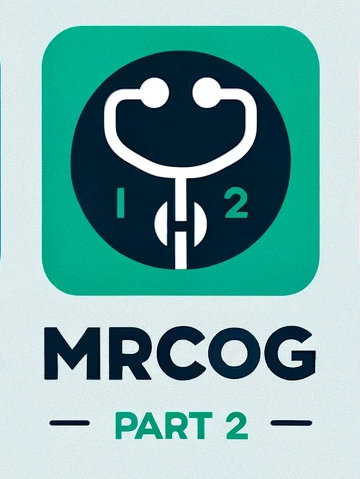Mastering the MRCOG Part 2: A Key Step Towards Specialist Recognition in Obstetrics and Gynaecology
The Membership of the Royal College of Obstetricians and Gynaecologists (MRCOG) is a prestigious qualification that opens doors to specialist roles in women’s health globally. MRCOG Part 2, often seen as the most critical and challenging stage in this journey, assesses a candidate’s clinical knowledge, decision-making ability, and application of evidence-based medicine in real-world scenarios. It is designed for trainees who have already passed Part 1 and have gained relevant clinical experience.
Structure and Format
MRCOG Part 2 is a written exam that includes two papers, each lasting three hours. Both papers consist of Single Best Answer (SBA) and Extended Matching Questions (EMQ), covering the full breadth of the obstetrics and gynaecology curriculum. These questions test the candidate’s ability to apply knowledge to clinical cases, rather than simply recall facts. It requires a thorough understanding of guidelines, protocols, and best practices used in the UK and internationally.

Effective Study Strategies
Success in MRCOG Part 2 hinges on a well-structured study plan. Candidates are advised to start early, ideally preparing for 4–6 months. Key study resources include the RCOG’s Green-top Guidelines, NICE Guidelines, and textbooks such as “Obstetrics and Gynaecology: An Evidence-Based Text for MRCOG.” Regular practice with past papers, online question banks, and study groups can reinforce concepts and improve time management during the exam.
Importance of Clinical Application
Unlike Part 1, which is more theoretical, MRCOG Part 2 question bank focuses heavily on clinical application. Candidates must demonstrate an ability to manage common and complex clinical scenarios safely and effectively. This includes understanding patient safety, multidisciplinary teamwork, and up-to-date clinical governance. Regular discussion of cases in a clinical setting and reflective practice can help bridge the gap between textbook knowledge and real-life decision-making.
Common Challenges and How to Overcome Them
Time pressure and the wide scope of topics are two major challenges faced by candidates. Many struggle to balance preparation with full-time clinical duties. To overcome these, it’s helpful to create a realistic timetable, focus on high-yield topics, and use active learning techniques like flashcards and mock exams. Seeking mentorship from those who have recently passed can also provide invaluable insight and motivation.
A Step Towards Specialist Excellence
Passing MRCOG Part 2 is a significant milestone that marks a candidate’s readiness for advanced clinical training and independent practice. It’s not just an exam—it’s a demonstration of competence, confidence, and commitment to women’s health. With focused preparation, the right resources, and clinical insight, aspiring specialists can master this exam and take a step closer to becoming leaders in obstetrics and gynaecology.
Comments
Post a Comment